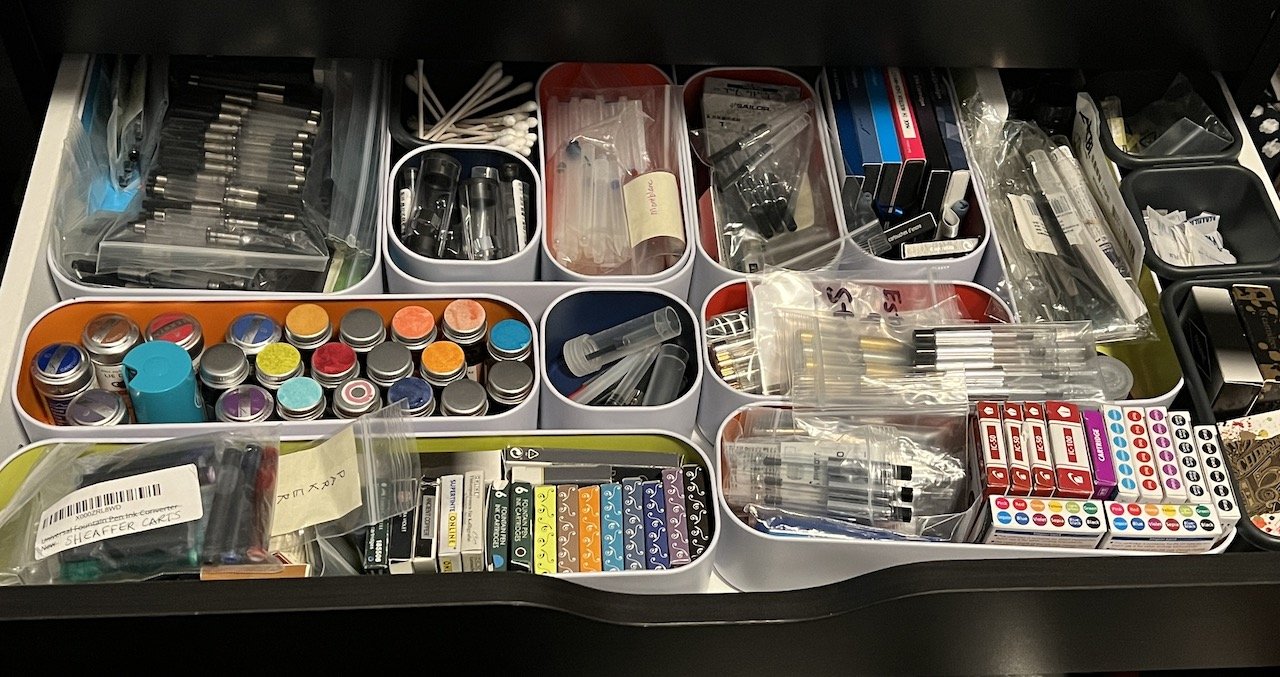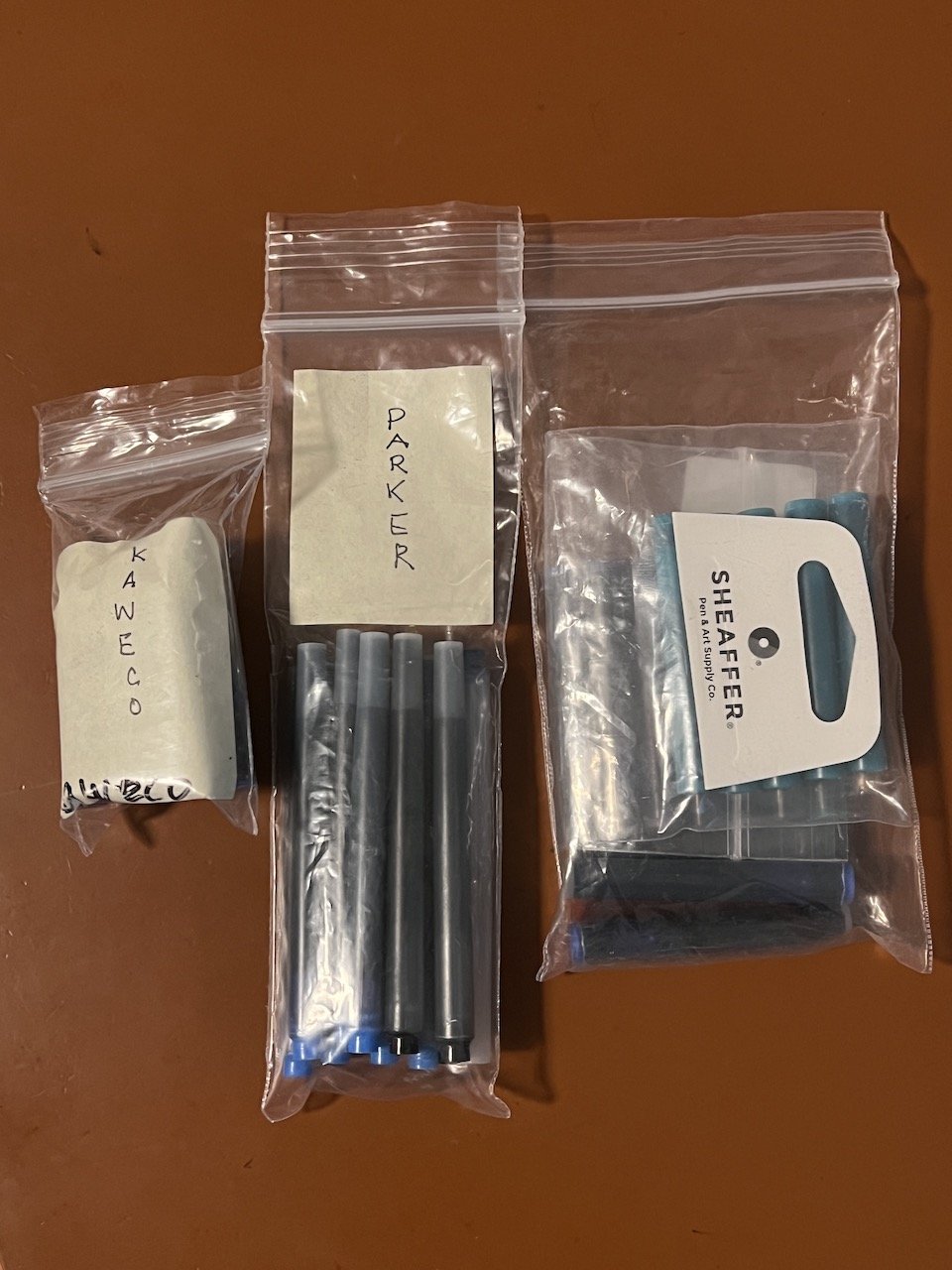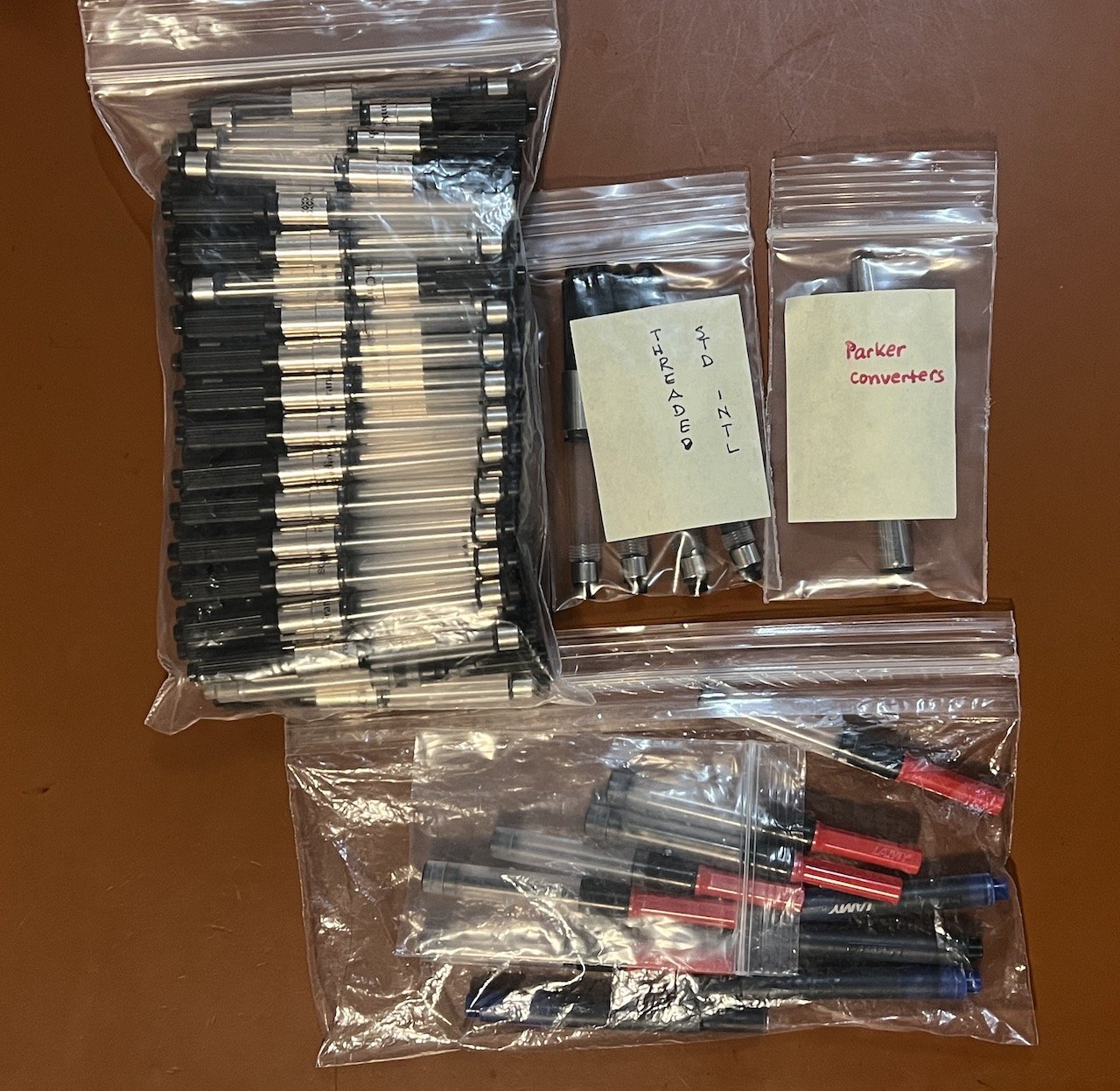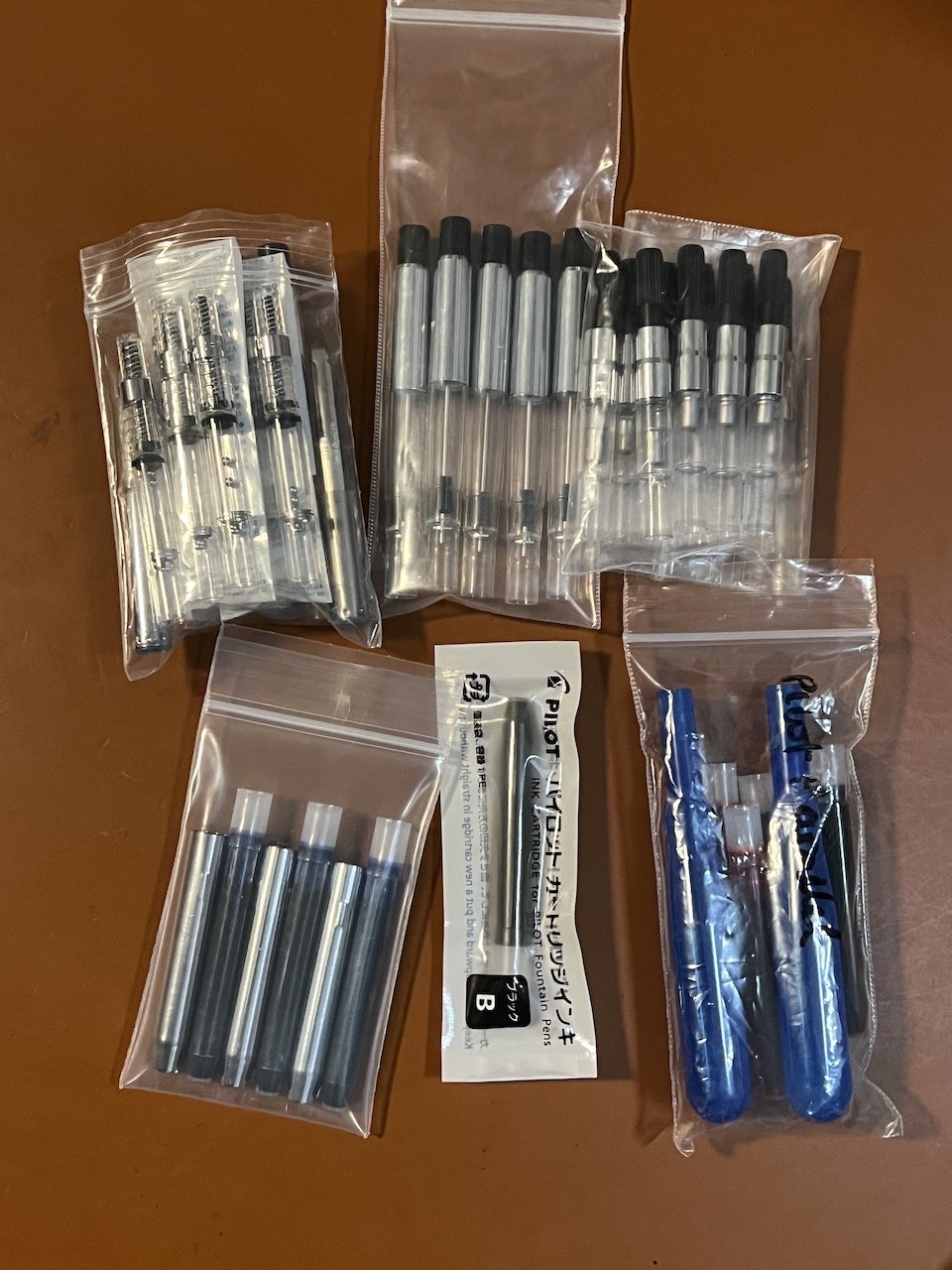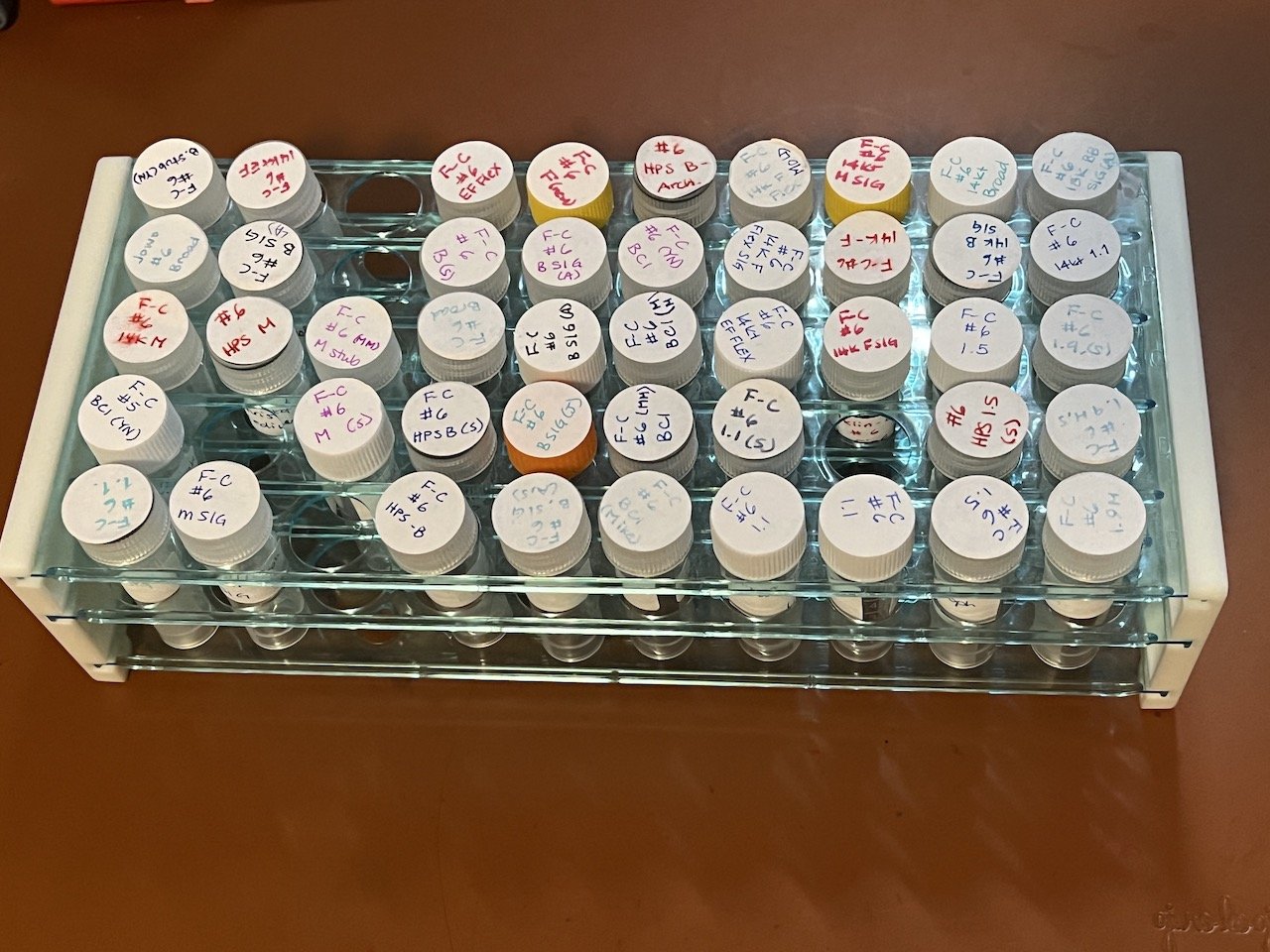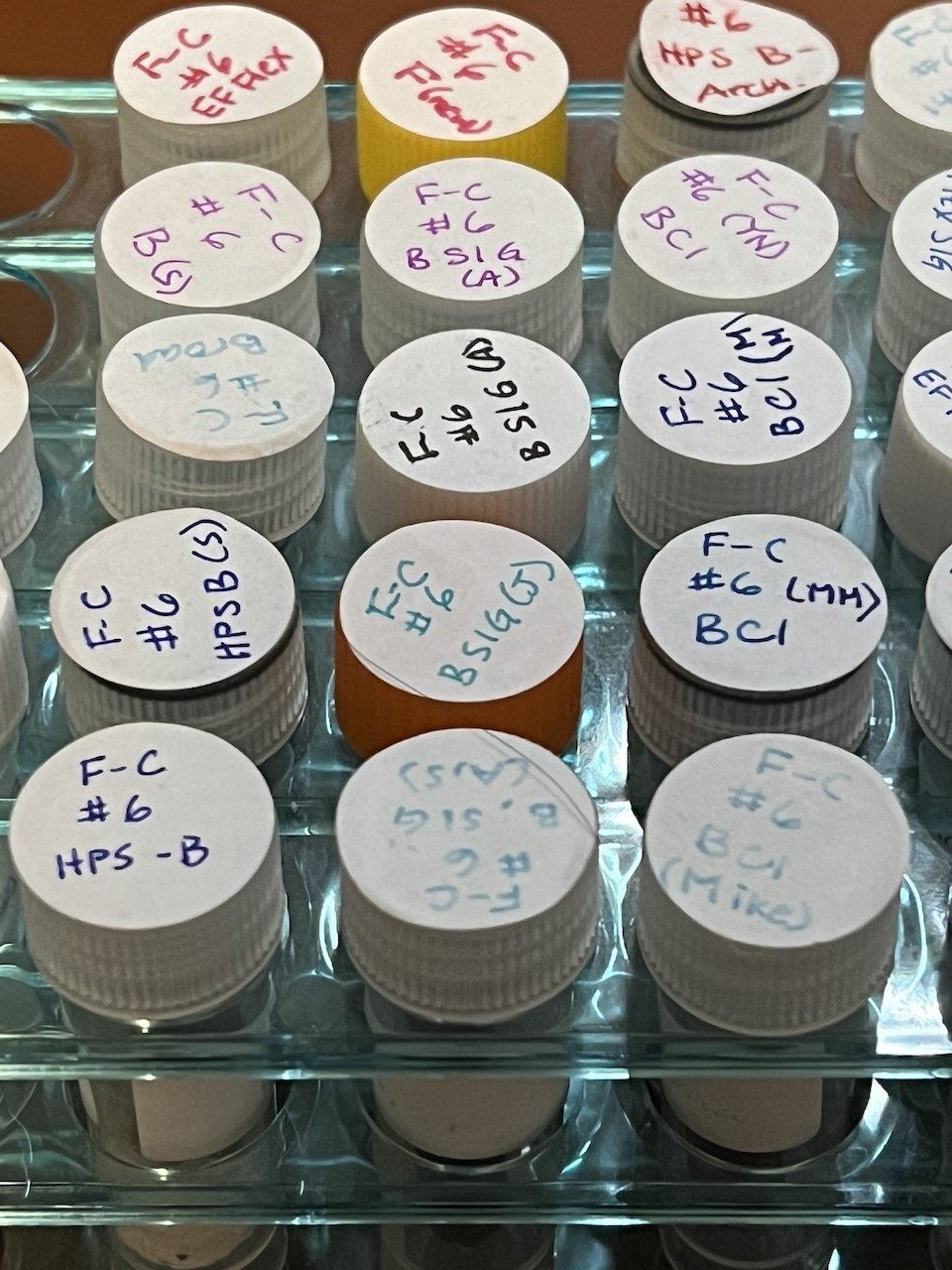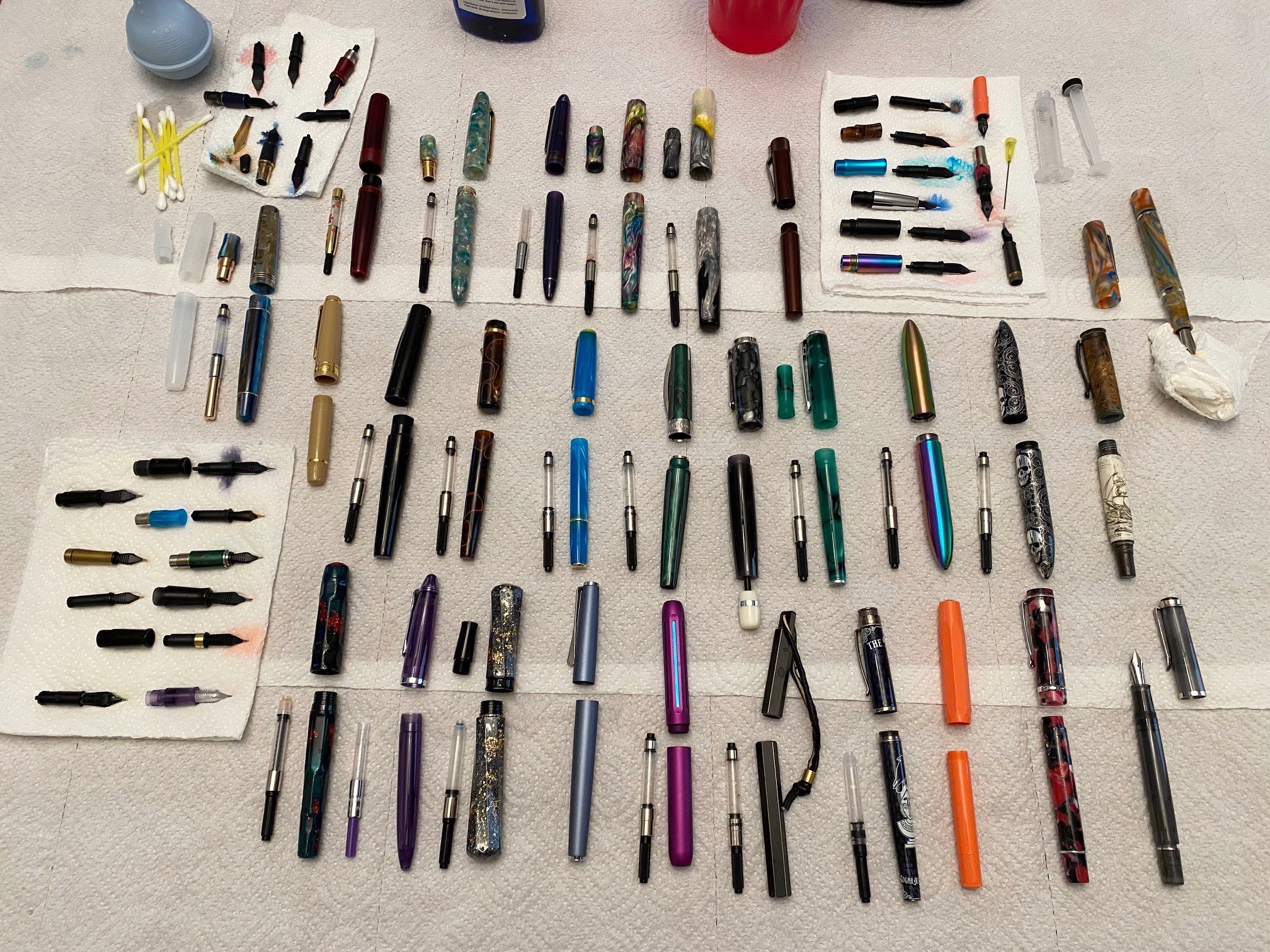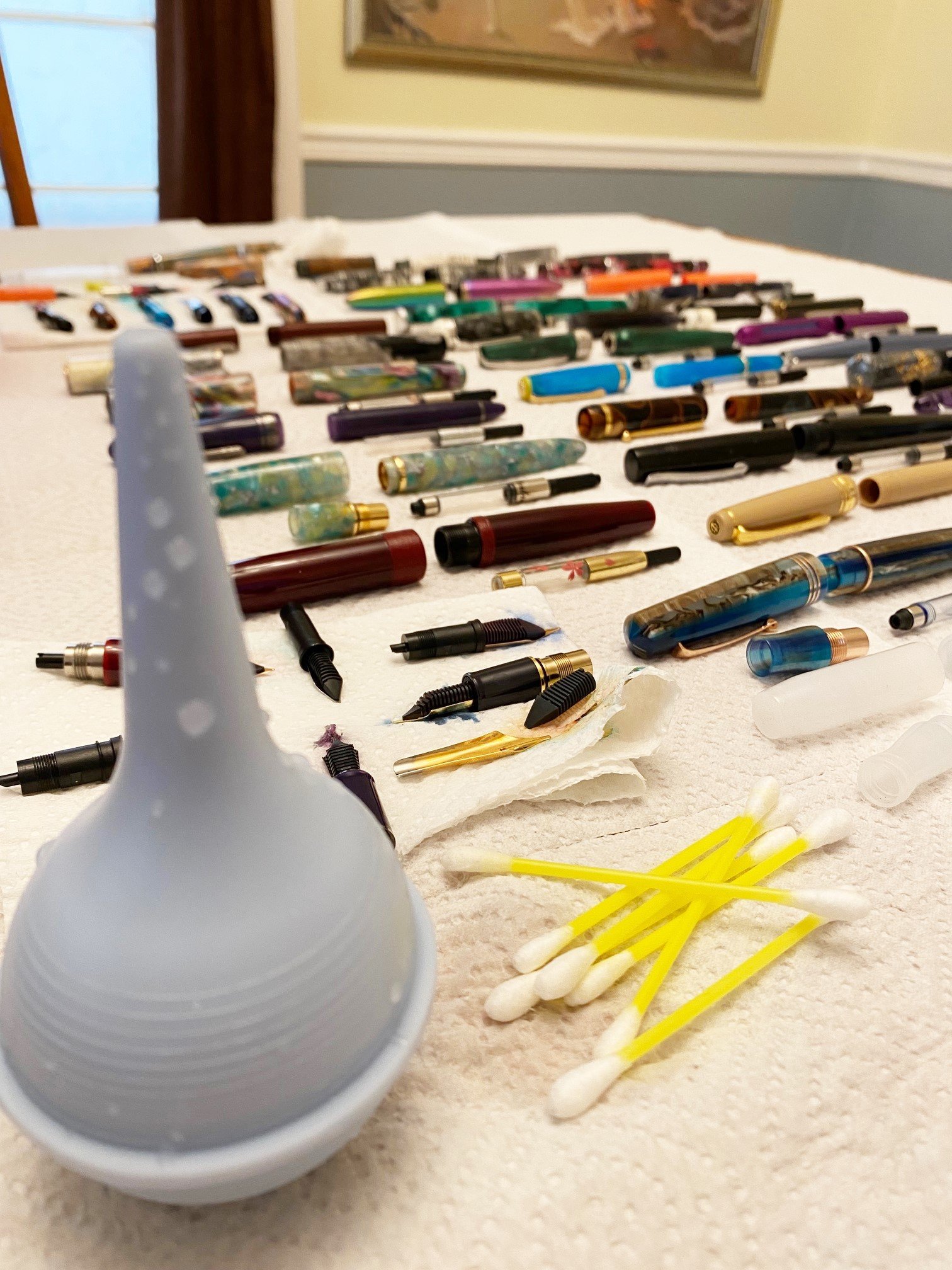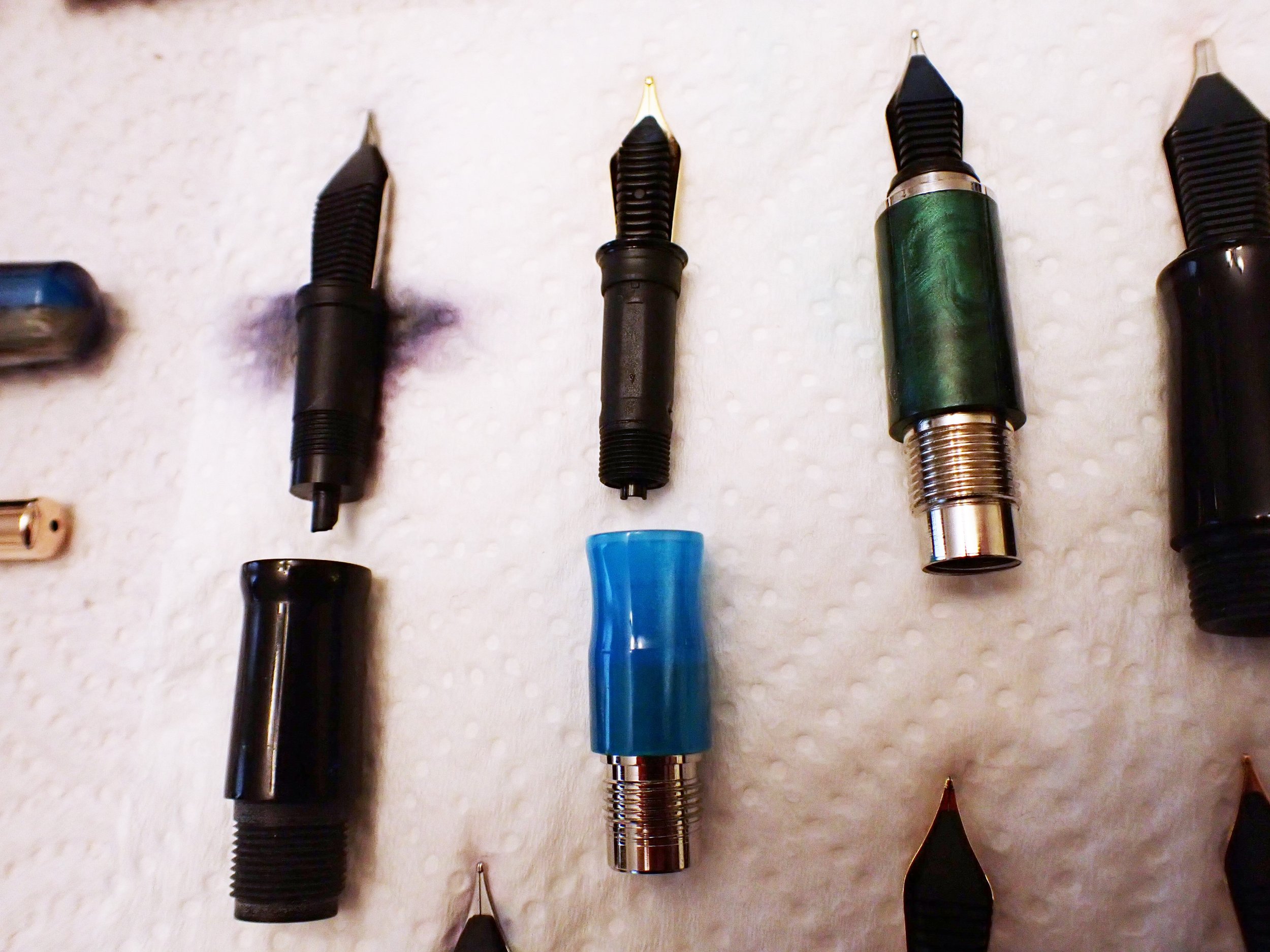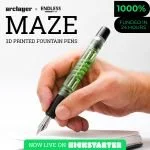(Kimberly (she/her) took the express train down the fountain pen/stationery rabbit hole and doesn't want to be rescued. She can be found on Instagram @allthehobbies because there really are many, many hobbies!.)
Hard to believe that 7 years ago today, I got my first fountain pens and oof, to say that I have since fallen into the rabbit hole is the understatement of the century! I don’t have a special pen picked out for this year’s penversary yet (and that’s ok!) but I thought it might be fun to look back at my first order to see what else I bought besides pens, because yes, there are other things besides pens!
As I’ve mentioned before, I couldn’t decide between the Pilot Metropolitan, Platinum Preppy and Lamy Safari, so I ended up ordering all 3! After watching Goulet’s Fountain Pens 101 videos (this is just the first in the series), I knew that I couldn’t just buy the pens by themselves, so what else did I get? And more importantly, do I still have & use them?
The first (of many) pens - I will always have a soft spot for them - Lamy Safari (top), Pilot Metropolitan and (one of seven) Platinum Preppies.
- Ink sample pack - I have no idea what colors I actually got because it was a random pack and that was before I knew about Fountain Pen Companion and tracking my samples. Given my stellar record of finishing ink samples and bottles (spoiler, I have a terrible record of such), it’s quite likely that I still have said samples. I’m also pretty sure I used some of them early on too, but this was the start of my journey as an inkophile.
- Rhodia No. 16 Notepad - Black, Dot Grid - Ah yes, the trusty Rhodia Notepad. I used so much of this that I may have gone hog wild when the local craft store had put them on clearance. I still use this from time to time, and while I probably won’t replenish the pads when I’m done, I don’t hesitate to recommend them as a fountain pen friendly paper, even if there are other papers that I enjoy more using which show off inks better.
Down to a few trusty pads! I think I have to make sure there’s always one in my Galen pad holder though!
Pen Cleaning Package Set - This set included a Bulb Syringe, a set of 2 - 5ml syringes, and an 8 ounce bottle of pen flush. I have since used the heck out of that bulb syringe, such that it ended up splitting in two and am on my 3rd bulb syringe. Ditto the 5ml syringes, which I have since replaced with 10 and 20ml syringes. I currently have 3-4 syringes with dedicated Schon pen cleaning tools. As for the pen flush, I do use it on occasion but clearly not as much as one might expect, given 7 years of pen cleaning. It’s just that most of the time, plain water works just fine, with a couple cycles in the ultrasonic for the super tough ones (especially if I haven’t touched the to-be-cleaned pile in a while).
Pilot CON-50 Piston Converter - I was so glad I got this because the Pilot Metropolitan came with the not-very-useful Con-B squeeze converter. It is still my preferred Pilot converter (I despise the Con-70 and the Con-40 is meh) and I’m glad I bought a small stash of them before they were discontinued.
My favorite Pilot converter, the CON-50.
- Ink Miser Ink-Shot Inkwell - I still use this, but not the way it was originally intended. Yes, I do pour the rest of my ink samples into the Ink Miser if I need to fill a pen, but I use it more often to keep an ink vial stable when I’m swatching inks. There are now a bunch of vial holders out there but the Ink Miser will remain a favorite because of its dual purpose.
The Ink Miser is handy when you’re getting down near the bottom of a sample.
Even though this Ink Miser has a base, I know I’m just tempting fate by using it as-is, so I repurposed some of the kid’s LEGO to make it extra sturdy.
- Platinum Preppy Refillable Marker - Ok, this isn’t a fountain pen, so I included it in this list. The marker is around here somewhere but I’ll be honest and admit that I haven’t used it much since getting it because I don’t use markers too often, and when I do, they tend to be the Tombow ABT Dual Brush pens. Still, I don’t regret buying it and if I ever want to use markers more regularly, I’ll pick up another so I can use FP inks with it.
Considering I didn’t know anything about fountain pens, I think I did pretty well with my first order! Other than the Preppy Marker and to an extent, the original ink samples, I’m still using the same items I bought 7 years ago. Obviously, I’ve since bought a lot of pens, inks, and more, but this was a good first order that got me well on my way down the rabbit hole!
As I often say, the best part of this rabbit hole isn’t all the stuff, but all the pen friends I’ve met along the way. Like I said last year, I still can’t believe that I am still enjoying this hobby as much as I do and being a part of this community keeps me coming back for more! Whether I’ve met you in person at a pen show or meetup or have only “met” you on IG, Facebook, Slack, Twitch, Discord, Zoom, etc., YOU are the best part of this hobby and I’m so grateful to have fallen in as deeply as I have. Thank you for being a part of this rabbit hole and for making the past 7 years so much fun! Now, who’s got some fun non-pen ideas to help me celebrate the 7th penversary?
(Disclaimer: All products shown were purchased by me.)






